Technicolor - Thomson LDK 20S User Manual
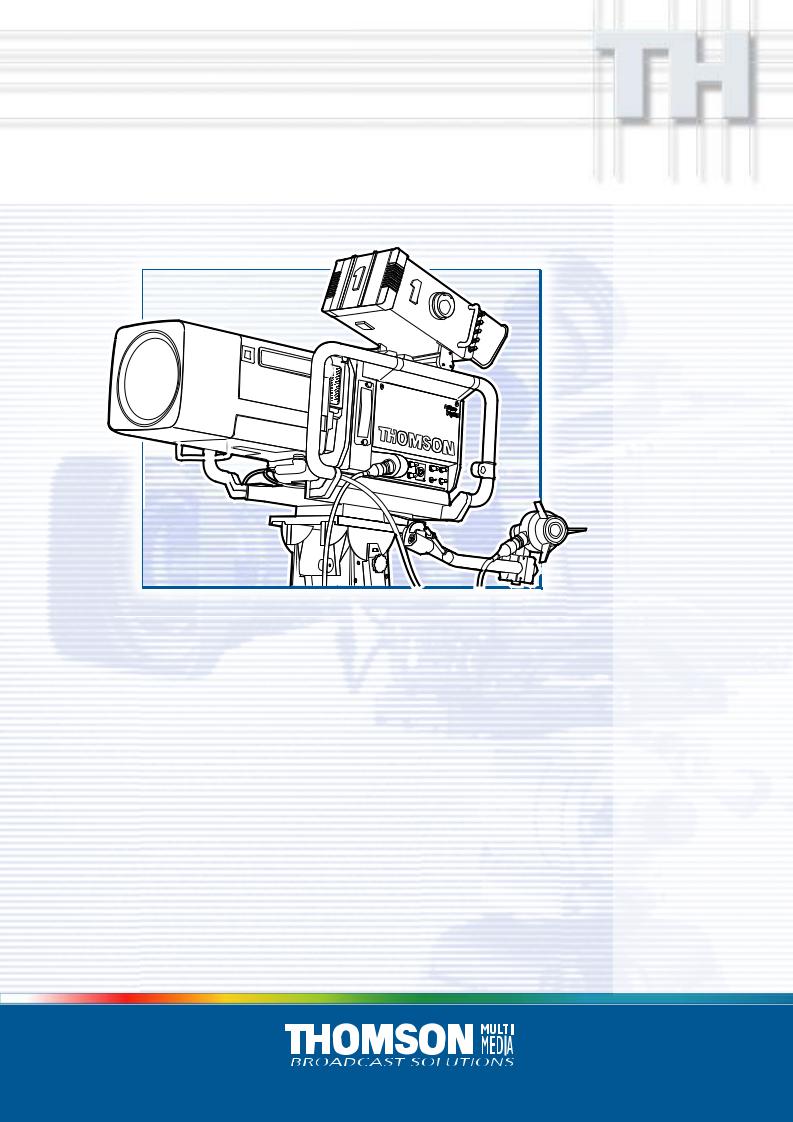
LDK 20(S)
Studio Camera
Manual Technical
3922 496 48591 St.00
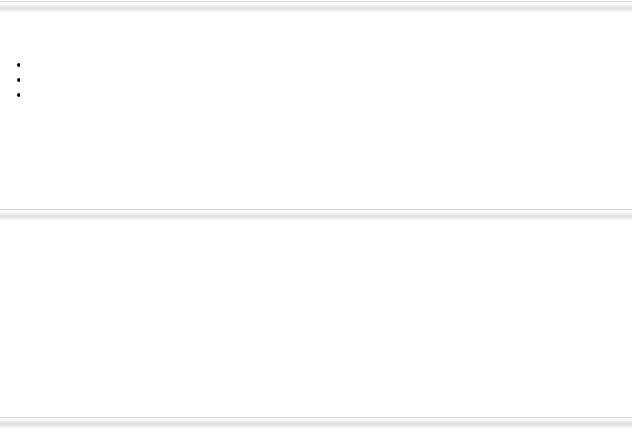
Declaration of Conformity
We, Thomson Broadcast Solutions Nederland B.V., Kapittelweg 10, 4827 HG Breda, The Netherlands declare under our sole responsibility that this product is in compliance with the following standards:
EN60065 : Safety
EN55103-1 : EMC (Emission) EN55103-2 : EMC (Immunity)
following the provisions of:
a.the Safety Directives 73/23//EEC and 93/68/EEC
b.the EMC Directives 89/336/EEC and 93/68/EEC
FCC Class A Statement
This product generates, uses, and can radiate radio frequency energy and if not installed and used in accordance with the instructions, may cause interference to radio communications.
It has been tested and found to comply with the limits for a class A computing device pursuant to Subpart J of part 15 of FCC rules, which are designed to provide reasonable protection against such interference when operated in a commercial environment.
Operation of this product in a residential area is likely to cause interference in which case the user at his own expense will be required to take whatever measures may be required to correct the interference.
Copyright
Für diese Unterlage behalten wir uns alle Rechte vor (Gemäß DIN 34). Technische Änderungen im Zuge der Weiterentwicklung vorbehalten.
Copying of this document and giving it to others, and the use or communication of the contents thereof, are forbidden without express authority. Offenders are liable to the payment of damages. All rights are reserved in the event of the grant of a patent or the registration of a utility model or design. Liable to technical alterations in the course of further development.
© Thomson Multimedia Broadcast Solutions 2002
Toute communication ou reproduction de ce document, toute exploitation ou communication de son contenu sont interdites, sauf autorisation expresse. Tout manquement à cette règle est illicite et expose son auteur au versement de dommages et intérêts. Tous nos droits sont réservés pour le cas de la délivrance d'un modèle d'utilité. Sous réserve de modification au cours de l'évolution technique.

LDK 20(S)
Studio Camera
Technical Manual
Contents
About This Manual ................................................ |
II |
Safety Instructions ........................................... |
1-1 |
Safety Summary ................................................ |
1-2 |
Cautions and Warnings ...................................... |
1-2 |
Earthing ............................................................. |
1-3 |
Installation ........................................................ |
2-1 |
Packing/Unpacking ............................................ |
2-2 |
Local / Remote Power Supply ............................ |
2-2 |
Hardware Setup and Customization ................... |
2-3 |
Test Sawtooth .................................................... |
2-4 |
Lens matching ................................................... |
2-4 |
AnalogueCh1-Ch2 ............................................. |
2-5 |
External Aspect Ratio Switch ............................. |
2-5 |
Dipswitch Settings ............................................. |
2-5 |
Viewfinder Cadre Indication ................................ |
2-6 |
Audio / Intercom settings ................................... |
2-7 |
Private Data ....................................................... |
2-8 |
Connectors and Cables ...................................... |
2-9 |
Specifications LDK20 ....................................... |
2-14 |
Replacements ................................................... |
3-1 |
Introduction ........................................................ |
3-2 |
Printed circuit boards ......................................... |
3-2 |
Front module ...................................................... |
3-3 |
Filterwheel Cassette ........................................... |
3-4 |
Power supply ..................................................... |
3-4 |
Adjustments ..................................................... |
4-1 |
Introduction ........................................................ |
4-2 |
Test Equipment ................................................. |
4-3 |
Set-up Instructions ............................................. |
4-3 |
Video Processor 1 Board ................................... |
4-5 |
Digital Video Processor .................................... |
4-10 |
Digital Video Processor .................................... |
4-11 |
Digital Video Processor Subboard ................... |
4-12 |
Digital Video Processor Subboard ................... |
4-13 |
Digital Video Processor .................................... |
4-14 |
Digital Video Processor .................................... |
4-15 |
Video Miscellaneous Board .............................. |
4-17 |
Sync./Shading Board ....................................... |
4-27 |
Video Miscellaneous Board .............................. |
4-35 |
Encoder Board PAL ......................................... |
4-37 |
Encoder Board NTSC ....................................... |
4-43 |
Audio/Intercom LF Board ................................. |
4-51 |
Audio/Intercom LF Board RTS MODE ............. |
4-55 |
Pre-Processor Board ........................................ |
4-57 |
Drawings ........................................................... |
5-1 |
Block Diagram Power Signals ............................ |
5-2 |
Block Diagram Video Signals ............................. |
5-3 |
Block Diagram Transmission Signals ................. |
5-4 |
Block Diagram Control Signals ........................... |
5-5 |
02.34.5 |
Technical Manual LDK 20(S) - Studio Camera |
I |

About This Manual
Service policy
The LDK 20(S) is a sophisticated camera containing state-of-the-art electronic components which are designed to provide long-life operation without the need for maintenance. With this in mind, the service policy of Thomson Multimedia Broadcast Solutions endeavours to ensure that help will be quickly on hand in the unlikely event of anything going wrong. The guidingprinciplesoftheThomsonMultimediaBroadcast Solutions first line maintenance philosophy are speed and cost effectiveness. First line maintenance is dedicated to keeping your camera operational, despite a fault, by module replacement and the replacement of minor mechanical parts by the user.
Purpose of this manual
The provision of correct information is the first step in ensuring the operational integrity of the camera. Information on the operation of the camera is to be found in the User’s Guide.
This installation and first line maintenance manual is an integral part of the service policy. It ensures that you will be able to install and set-up your camera to meet the requirements of your environment. This informationontheinstallationofthecameraiscontained in Section 2 of the manual. The remaining sections of the manual provide first line service information so that suitably qualified service personnel can detect and repair faults, normally by module replacement.
Because of the complexity of some of the components, second line service can only be carried out at the specially equipped service centres and information concerning second line maintenance is not supplied in this manual.
Intended audience
The manual is intended as a guide to those with a working knowledge of camera systems and installation techniques. The first line detection and repair of faults requiresageneralknowledgeoftestandmeasurement techniques.
Structure of this manual
The manual is divided into five sections:
Section 1: Safety Information.
Contains important safety information and should be read before carrying out any work on the camera.
Section 2: Installation.
Gives instructions on the integration of the camera into the operating environment and the customization of certain hardware functions
Section 3: Replacements.
Gives information on the replacement of components at first line level.
Section 4: Adjustments.
Contains the adjustment procedures to be followed to obtain the best performance from the camera.
Section 5: Drawings.
Contains block diagrams of the camera.
II |
Technical Manual LDK 20(S) - Studio Camera |
02.34.5 |

Section 1
Safety Instructions
This section outlines the precautions that must be taken into account when using the LDK 20(S) Studio Camera.
Contents
Safety Summary ........................................................ |
1-2 |
Earthing ..................................................................... |
1-3 |
Cautions and Warnings ............................................. |
1-2 |
|
|
Safety Instructions |
Technical Manual LDK 20(S) - Studio Camera |
1-1 |

Safety Summary |
Cautions and Warnings |
This informaton is intended as a guide for trained and qualified personnel who are aware of the dangers involved in handling potentially hazardous electrical/electronic equipment. It is not intended to contain a complete list of all safety precautions which should be observed by personnel in using this or other electronic equipment.
The installation, maintenance and service of this equipment involves risks both to personnel and equipment and must be performed only by qualified personnel exercising due care.
Personnel engaged in the installation, operation, maintenance or servicing of this equipment are urged to become familiar with First Aid theory and practises.
During installation and operation of this equipment, local building safety and fire protection standards must be observed.
Before connecting the equipment to the power supply of the installation, the proper functioning of the protective earth lead of the installation needs to be verified.
Whenever it is likely that safe operation is impaired, the apparatus must be made inoperative and secured against any unintended operation. The appropriate servicing authority must then be informed. For example, safety is likely to be impaired if the apparatus fails to perform the intended function or shows visible damage.
This product has been designed and tested according to EN60065.
When performing service, be sure to read and comply with the warning and caution notices appearing in the manuals. Warnings indicate danger that requires correct procedures or practices to prevent death or injury to personnel. Cautions indicate procedures or practices that should be followed to prevent damage or destruction to equipment or property.
WARNING
THE CURRENT AND VOLTAGES PRESENT IN THIS
EQUIPMENT ARE DANGEROUS. ALL PERSONNEL MUST AT ALL TIMES FOLLOW THE SAFETY REGULATIONS.
ALWAYS DISCONNECT POWER BEFORE REMOVING
COVERS OR PANELS.
ALWAYS DISCHARGE HIGH VOLTAGE POINTS
BEFORE SERVICING.
NEVER MAKE INTERNAL ADJUSTMENTS, PERFORM MAINTENANCE OR SERVICE WHEN ALONE OR WHEN FATIGUED.
IN CASE OF AN EMERGENCY ENSURE THAT THE
POWER IS DISCONNECTED.
ANY INTERRUPTION OF THE PROTECTION CONDUCTOR INSIDE OR OUTSIDE THE APPARATUS, OR DISCONNECTION OF THE PROTECTIVE EARTH
TERMINAL, IS LIKELY TO MAKE THE APPARATUS DANGEROUS. INTENTIONAL INTERRUPTION IS
PROHIBITED.
FOR SAFETY REASONS THE CPU MUST BE MOUNTED IN A 19-inch RACK WHICH HAS SAFETY COVERS
ACCORDING TO IEC65.
WHEN TWO CPUs ARE MOUNTED ABOVE EACH
OTHER THE MINIMUM DISTANCE BETWEEN THEM MUST BE 50MM OR THE RACK MUST BE FORCE-AIR
COOLED.
USE ONLY FUSES OF THE TYPE AND RATING
SPECIFIED.
CAUTION
To prevent risk of overheating, ventilate the product correctly.
Connect the product only to a power source with the specified voltage rating.
Only connect a Triax cable from the LDK 6 camera family to an LDK 6 CPU. Never connect it to any other base station.
Never connect the Triax cable from a camera to a CPU of a different family; never connect the LDK family to the TTV family.
Do not allow system ground currents to exceed 1.5A in the outer shield of the triax cable or 0.2A in other cable shields.
It is strickly prohibited to short circuit the inner and outer shields of a triax cable used to connect a camera to a base station.
1-2 |
Technical Manual LDK 20(S) - Studio Camera |
Safety Instructions |
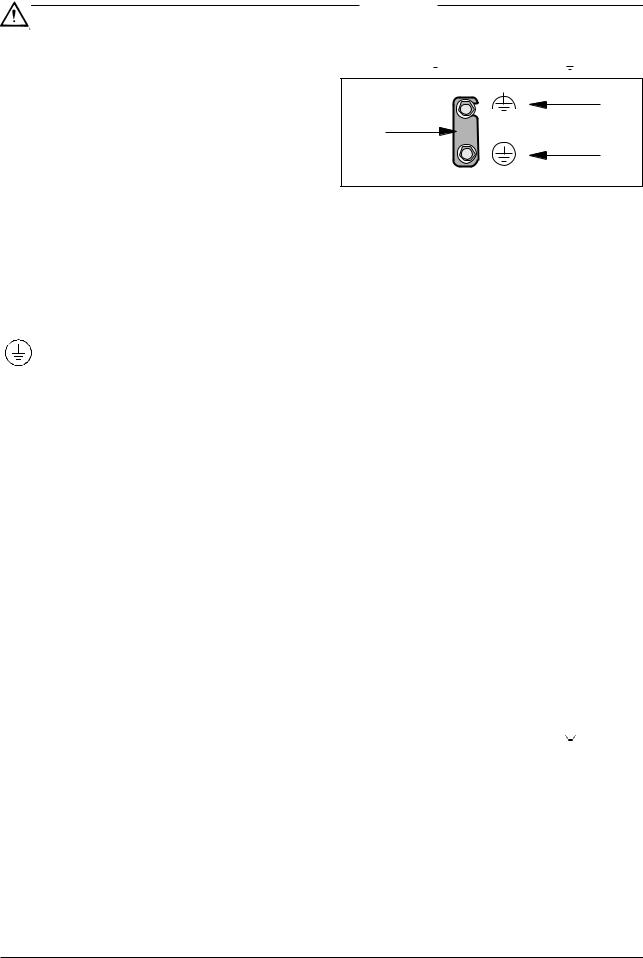
Symbol Colour |
Explanation |
|
|
Red |
High voltage terminal at which a |
||
|
voltage, with respect to an other |
||
|
terminal, exists or may be |
||
|
adjusted to 1000V or more. |
||
Yellow/Black |
Live part. |
|
|
Yellow/Black |
This marking indicates that the |
||
|
operator must refer to an |
||
|
explanation |
in the |
Instruction |
|
Manual, or that a specific |
||
|
component must be replaced by |
||
|
the component specified in the |
||
|
documentation for safety |
||
|
reasons. |
|
|
White/Black |
Protective |
earth |
(ground) |
|
terminal. |
|
|
Cathode ray tubes
Components marked  on the circuit diagram are critical for safety and include those specified to comply with X-ray emission standards for units using cathode ray tubes and those specified for compliance with various regulations regarding spurious radiation emission.
on the circuit diagram are critical for safety and include those specified to comply with X-ray emission standards for units using cathode ray tubes and those specified for compliance with various regulations regarding spurious radiation emission.
When servicing units that use cathode ray tubes (CRTs), the cathode ray tubes themselves, the high voltage circuits and related circuits are specifically chosen so that they comply with recognized codes pertaining to X-ray emission.
Consequently, when servicing, replace the cathode ray tubes and other parts with specified parts only. Do not attempt to modify these circuits as any unauthorized modification can increase the high voltage value and cause X-ray emission from the cathode ray tube.
Handle the cathode ray tube only when wearing shatterproof goggles and after discharging the high voltage completely.
Earthing
The rear of a CPU has two separate screw terminals for protective earth  (PE) and video earth
(PE) and video earth  (VE).
(VE).
VE
Metal strap
PE
These are normally connected by a metal strap. The protective earth terminal is internally connected to the protective earth conductor of the power cable. If required, the central earth connection wire of the studio can be connected to terminal PE.
In normal circumstances the connection between the protective earth and the video earth should not be broken.
The metal strap may be removed only if the studio (or OB van) is equipped with separate protective and video earth systems. Under these circumstances the video earth terminal must be connected to the central functional earth potential (video earth) of the studio. This earth potential should have functional protective and noiseless earth (FPE) qualities as stated in the VDE regulation 0800/part2. A low impedance interconnection of both earth conductors must be provided at the central studio earthing point.
WARNING
THE UNIT MUST ALWAYS BE CONNECTED TO
PROTECTIVE EARTH.
Mains Lead Wiring for UK Users
The wires in the mains lead are coloured in accordance with the following code:
GREEN AND YELLOW |
- |
EARTH |
BLUE |
- |
NEUTRAL |
BROWN |
- |
LIVE |
As the colours of the wires in the mains lead of this apparatus may not correspond with the coloured markings identifying the terminals in your plug proceed as follows:
•The wire coloured GREEN AND YELLOW must be connected to the terminal on the plug marked with the letter E or by the safety earth symbol  or coloured GREEN or GREEN AND YELLOW.
or coloured GREEN or GREEN AND YELLOW.
•The wire coloured BROWN must be connected to the terminal marked with the letter L or coloured RED.
•The wire coloured BLUE must be connected to the terminal marked with the letter N or coloured BLACK.
Ensure that your equipment is connected correctly - if you are in any doubt consult a qualified electrician.
Safety Instructions |
Technical Manual LDK 20(S) - Studio Camera |
1-3 |

1-4 |
Technical Manual LDK 20(S) - Studio Camera |
Safety Instructions |

Section 2
Installation
This section provides information which is relevant when the camera is to be used for the first time. Packing and unpacking instructions together with information on the integration of the camera into your studio system are provided. The procedures for the customization of certain hardware functions and connector information is also provided.
Contents
Packing/Unpacking ............................................ |
2-2 |
Local / Remote Power Supply ............................ |
2-2 |
Hardware Setup and Customization ................... |
2-3 |
Test Sawtooth .................................................... |
2-4 |
Lens matching ................................................... |
2-4 |
AnalogueCh1-Ch2 ............................................. |
2-5 |
External Aspect Ratio Switch ............................. |
2-5 |
Dipswitch Settings ............................................. |
2-5 |
Viewfinder Cadre Indication ................................ |
2-6 |
Audio / Intercom settings ................................... |
2-7 |
Private Data ....................................................... |
2-8 |
Connectors and Cables ...................................... |
2-9 |
Specifications LDK20 ....................................... |
2-14 |
Installation |
Technical Manual LDK 20(S) - Studio Camera |
2-1 |
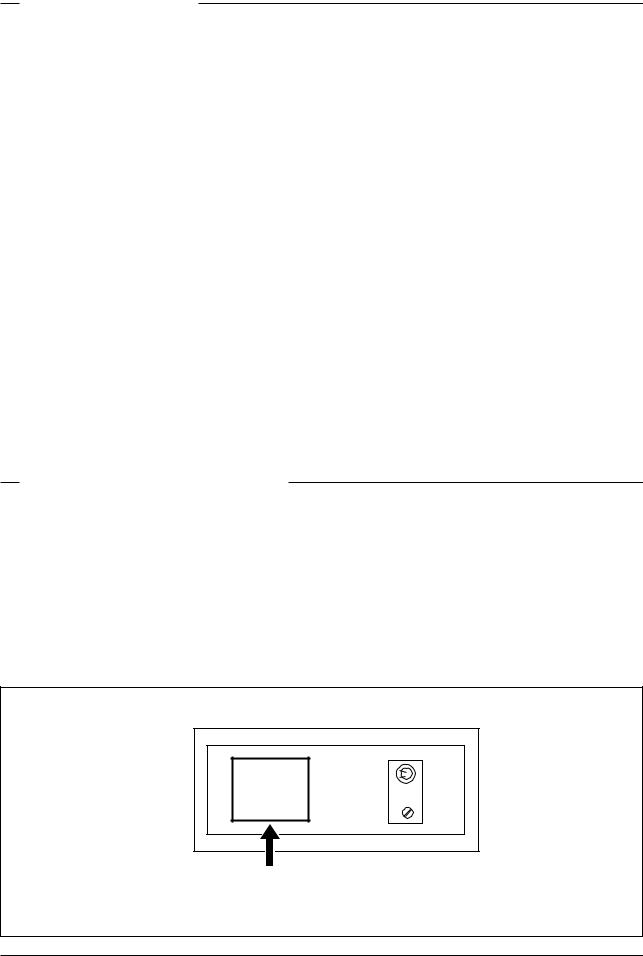
Packing/Unpacking
Inspect the shipping container for evidence of damage immediately after receipt. If the shipping container or cushioning material is damaged, it should be kept until the contents of the shipment have been checked for completeness and the units have been checked mechanically and electrically.
The shipping container should be placed upright and opened from the top. Remove the cushioning material and lift out the contents.
The contents of the shipment should be checked against the packing list. If the contents are incomplete, if there is mechanical damage or defect, or if the units do not perform correctly when unpacked, notify your Thomson Multimedia Broadcast Solutions sales or service centre within eight days. If the shipping container shows signs of damage or stress, notify the
carrier as well.
If a unit is being returned to Thomson Multimedia Broadcast Solutions for servicing, try to use the containers and materials of the original packaging. Attach a tag indicating the type of service required, return address, model number, full serial number and the return number which will be supplied by your Thomson Multimedia Broadcast Solutions service centre.
If the original packing can no longer be used, the following general instructions should be used for repacking with commercially available materials:
a.Wrap unit in heavy paper or plastic.
b.Use strong shipping container.
c.Use a layer of shock-absorbing material around all sides of the unit to provide firm cushioning and prevent movement inside container.
d.Seal shipping container securely.
e.MarkshippingcontainerFRAGILEtoensurecareful handling.
Local / Remote Power Supply
The LDK 20 camera is delivered ready to operate in the remote mode. If the camera has to be used in the local (stand-alone)mode,carryoutthefollowinginstructions to allow the power to be supplied via the mains power supply input connector on the right side connector panel:
a.Disconnect the mains power supply or the triax cable, whichever is connected.
b.Loosen two screws and remove the rear connector panel of the camera.
c.Locate the remote/local switch - a large black plastic box.
d.Set the switch to the local position. The camera is delivered with the switch in the remote position.
f. Return the rear connector panel to its position.
R
E 230V 
 115V
115V
M
O
T
E
Local/remote
Switch
2-2 |
Technical Manual LDK 20(S) - Studio Camera |
Installation |
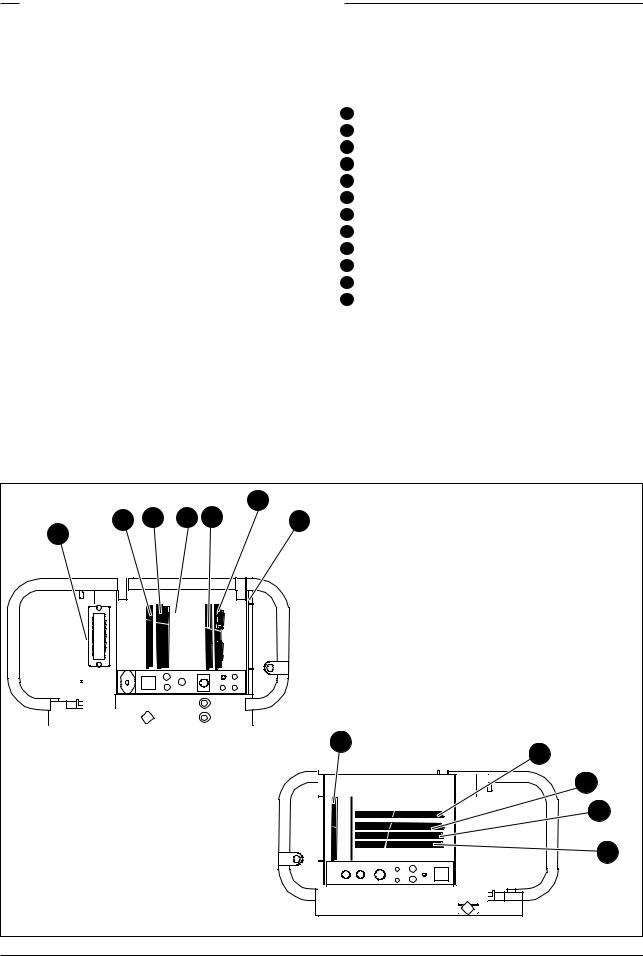
Hardware Setup and Customization
The camera is delivered in a ready-to-use state, however, there are occasions when it might be necessary to re-adjust some functions after, for example, fitting a new lens.
A large number of functions can be set-up using the control facilities of the menu system. In addition to this software set-up there are some functions which can be selected or adjusted internally in the camera.
Refer to the next chapters for instructions.
Location of adjustments
Turn the two screws on the left side panel 90° counterclockwise and swing down the cover. Turn the twoscrewsontherightsidepanel90°counterclockwise and swing down the cover.
Unless mentioned otherwise the adjustments for hardware setup and customization are located at the side of the following modules:
Front Module
2Video Processor 1
3Digital Video Processing
4Subboard DSP
Sync. Shading
6Data Processor
7Power
8Video Miscellaneous Encoder
10Video Mux Ext-TP Rec
11Audio/Intercom TX-Rec
12RTS Power Miscellaneous
|
|
|
|
6 |
2 |
3 |
4 |
5 |
7 |
1 |
|
|
|
|
|
|
|
|
12 |
|
|
|
|
8 |
|
|
|
|
9 |
|
|
|
|
10 |
|
|
|
|
11 |
Installation |
Technical Manual LDK 20(S) - Studio Camera |
2-3 |
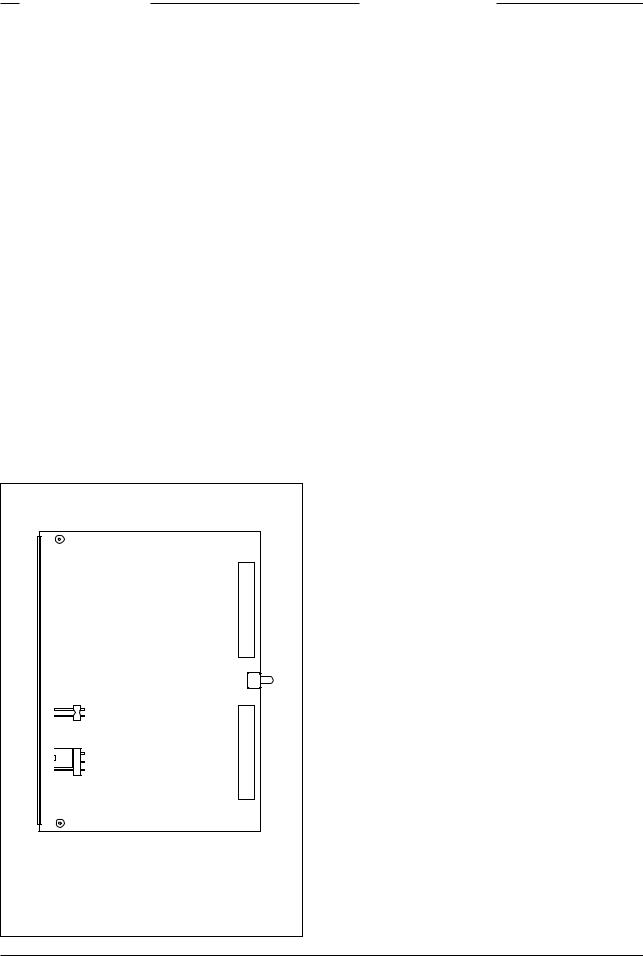
Test Sawtooth |
Lens matching |
A test sawtooth signal is normally only used for adjustmentprocedures.JumperX3onVideoprocessor 1 board provides a choice between two internal signals or an external signal.
Internal signals
Set jumper X3 to position BC to get the nominal sawtooth. This is used for checking amplitudes. Set jumper X3 to position AB to get a small sawtooth (approximately 25% nom.). This small sawtooth is used for checking painting or colour temperature ranges.
External signal
To inject an external test signal first set jumper X3 to position CD (test input). Connect the external test signal to connector X4-1/2. The nominal value of this signal is 700 mV without sync.
The test sawtooth signal is switched on by means of the Operate menu of the camera or the Setup 1 menu of the MCP.
When a camera is supplied with a lens it is not necessary to perform any of the following adjustments asthelensisalreadymatchedtothecamera.However, if you wish to change to a different type of lens or the lens is not supplied with your camera, back focus, white shading and auto iris adjustment procedures may have to be performed.
•Colour balance.
If required, perform the gain adjustment of the preprocessorboardand/orwhiteshadingadjustment procedures, described in section 4.
•Auto Iris Adjustment
If a different lens either works too slow or overshoots too much with the auto iris control, adjust the potentiometer on the lens to obtain acceptable operation. Refer to the lens documentation.
•Back Focus Adjustment
To adjust the back focus of the lens refer to the documentation of the lens.
|
|
A1 |
|
|
|
55X |
|
X4 |
2 |
|
|
|
|
||
|
1 |
|
|
TEST IN |
|
||
|
B |
65 |
|
X3 |
X |
||
A |
|||
|
C |
|
|
TOP SIDE |
|
Video processor 1 |
|
2-4 |
Technical Manual LDK 20(S) - Studio Camera |
Installation |
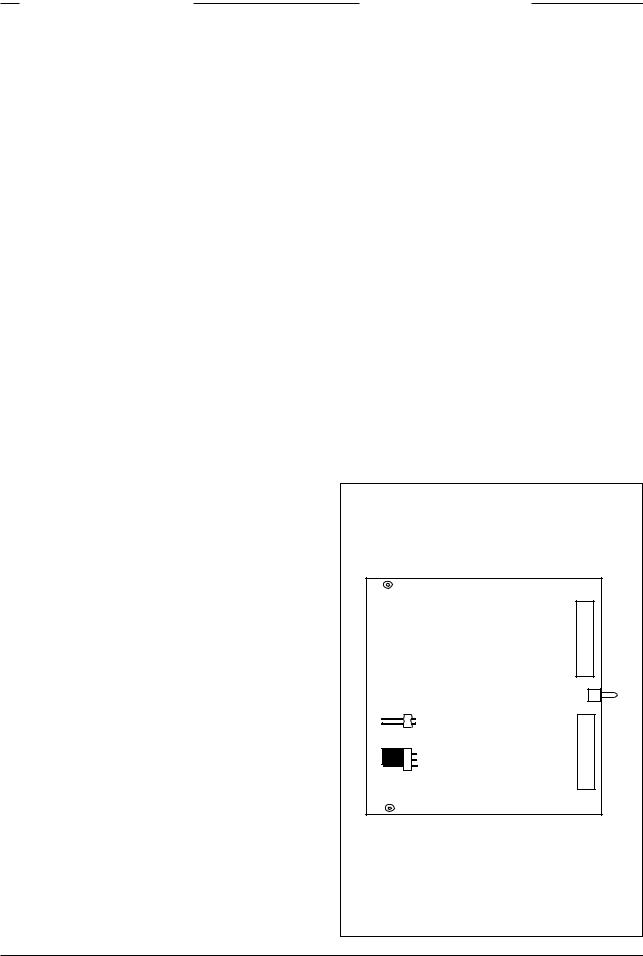
Analogue Ch1-Ch2
Two analogue channels (AN 0 and AN 1) are available from the base station to the camera via the triax cable and can be used to transmit L.F. signals. For example, joystick control or pan and tilt. The input signals are applied to the Auxiliary connector of the base station. The output signals are available on the Auxiliary connector of the camera. The input signal and output signal voltage is between 0 and 5Vdc.
The AN 1 channel is sometimes used for switching the aspect ratio. This is selected by means of the software. See next chapter for instructions.
Dipswitch Settings
On the Digital Video Processor 3922 406 84951 the following functions can be selected with dipswitches ZS110 and ZS111:
ZS110-1 Leaking Pixel Corrector
ZS110-2 Noise Reducer
ZS110-3 HW Gamma Low Pass Filter
ZS110-4 Contour Boost (Viewfinder)
ZS111-1 Status Bar (only LDK20P) Focus
value remains present.
External Aspect Ratio Switch
The analogue channel 1 (AN 1) input on the base station can be used to switch the aspect ratio. This allows multiple camera switching.
This function can be selected in the menu system of the camera or MCP. To select this function on the camera, set the Aspect ratio of the Operate/Sensor/ AspRatio menu to External.
Apply a voltage at TTL level to the Auxiliary base station connector. See Installation Manual Base Station.
Input high: |
aspect ratio 4:3 |
Input low: |
aspect ratio 16:9 |
|
|
X55 |
X4 |
|
|
|
2 |
|
TEST IN |
1 |
|
|
|
|
|
B |
X56 |
|
A |
|
|
|
|
|
C |
|
TOP SIDE |
|
Video processor 1 |
Installation |
Technical Manual LDK 20(S) - Studio Camera |
2-5 |
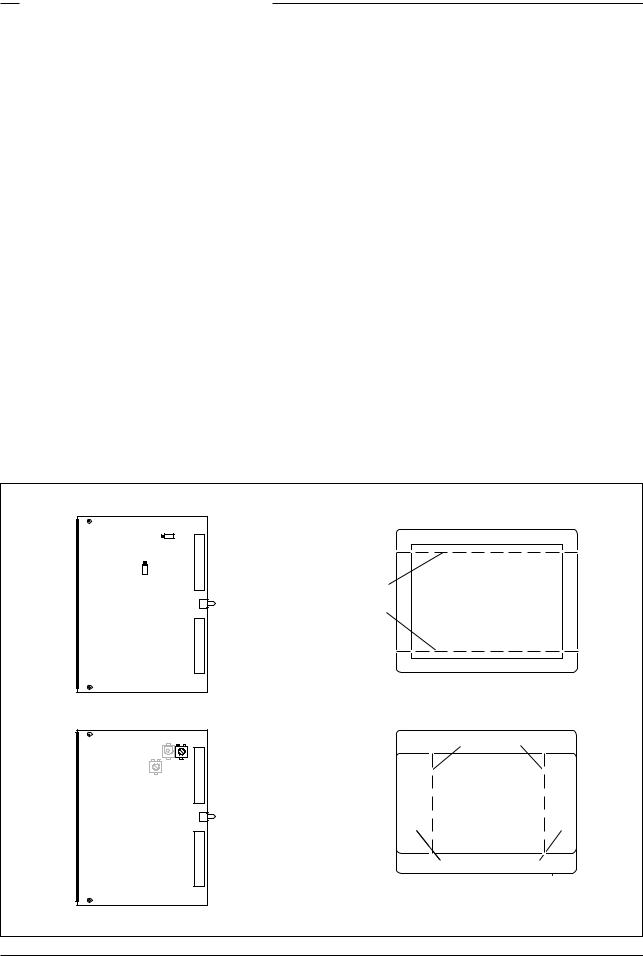
Viewfinder Cadre Indication
Cadre On/Off
Switch S6 on the Sync./shading board allows the cadre in the viewfinder to be switched on permanently or to be controlled by the menu system. Position AB selects (remote-) menu control (factory setting); position AC switches the cadre on permanently.
If S6 is in the remote position then you can select in Menu VF/Lens Cadre On or Off. The cadre is switched to the 4:3 format or to the 16:9 format depending on the position of the aspect ratio switch.
Cadre appearance
Switch S7 on the Sync./shading board allows the cadre in the viewfinder to take the form of two dotted lines or two low-contrast areas outside the picture area. Position AB selects the dotted lines; position AC selects the low-contrast areas.
The contrast of the cadre strips is adjusted with potentiometer ZR247 on the Video/Miscellaneous board.
|
C A B |
|
|
|
|
S7 |
|
low-contrast |
area |
|
|
|
||
|
C |
16 |
|
|
|
A |
X |
|
|
|
B |
|
|
|
|
S6 |
|
|
|
|
|
dotted |
|
|
|
|
lines |
16:9 |
|
|
|
26X |
low-contrast |
area |
|
|
|
||
TOP SIDE |
Sync / Shading board |
|
|
|
|
ZR247 |
|
dotted lines |
|
|
Cadre |
A |
|
|
|
contrast |
|
|
|
|
|
71X |
|
|
|
|
|
4:3 |
|
1X B7
low-contrast areas
TOP SIDE |
Video / Miscellaneous board |
2-6 |
Technical Manual LDK 20(S) - Studio Camera |
Installation |
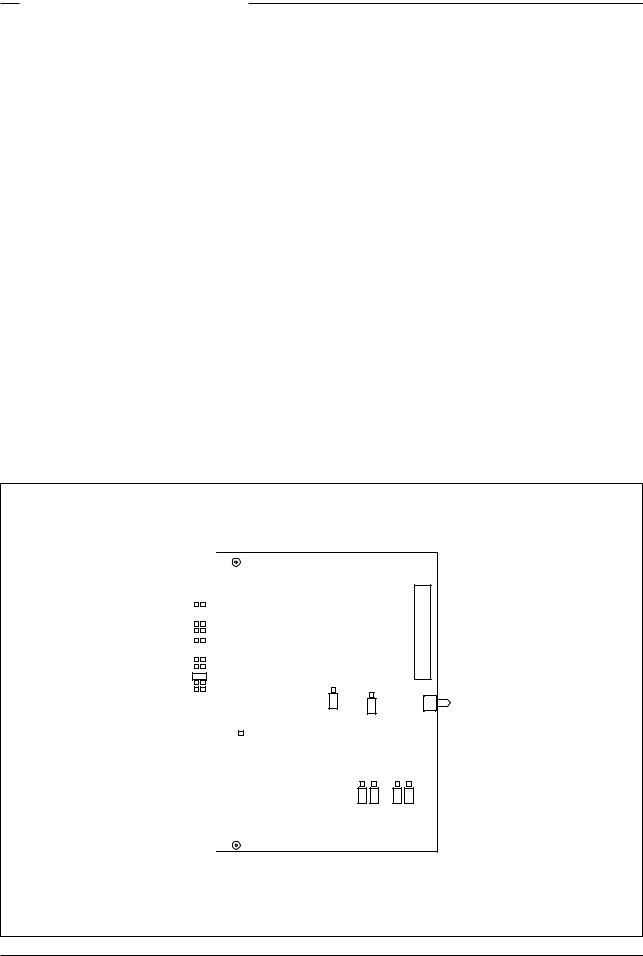
Audio / Intercom settings
Audio microphone signals
The high-pass filters in the audio channels reduce the background noise in the audio microphone signals. The high-pass filters can be set as follows:
Audio 1 |
at MCP |
on/off |
(off=default setting) |
Audio 2 |
at MCP |
on/off |
(off=default setting) |
The phantom power for different types of microphones |
|||
can be set as follows: |
|
||
Audio 1 |
S100: |
D1-E1/D2-E2 |
+12Vdc |
|
|
B1-C1/B2-C2 |
Ground * |
|
|
A1-B1/A2-B2 |
+48Vdc |
Audio 2 |
S200: |
D1-E1/D2-E2 |
+12Vdc |
|
|
B1-C1/B2-C2 |
Ground * |
|
|
A1-B1/A2-B2 |
+48Vdc |
(* factory setting) |
|
|
|
Intercom headset signals
The signal to the headset of the tracker can be selected by S420 on the Audio/Intercom LF board. Position AB (the factory setting) selects the tracker microphone sidetone signal; position AC selects the ENG signal.
Intercom microphone signals
The gain of the cameraman microphone signal can be set at Camera Menu as follows:
40db (default setting) 0db
The gain of the tracker microphone signal can be set at Camera Menu as follows:
40db (default setting) 0db
The factory settings are for headsets with a dynamic microphone.
The phantom power for both cameraman and tracker microphones can be set with S300 as follows:
AC |
+12Vdc |
AB |
Ground (factory setting) |
E |
|
|
|
|
|
|
|
|
|
|
|
|
|
|
|
|
|
|
|
|
|
|
|
|
|
|
|
|
|
|
|
D |
|
|
|
|
|
|
|
|
|
|
|
||||
C |
|
|
|
|
|
|
|
|
|
|
|
||||
|
|
|
|
|
|
||||||||||
B |
|
|
|
|
|
|
|
|
|
|
|
|
S200 |
||
|
|
|
|
|
|
||||||||||
A |
|
|
|
|
|
|
|
|
|
|
|||||
|
|
|
|
||||||||||||
|
|
|
|
|
|
||||||||||
E |
|
|
|
|
|
|
|
|
|
|
|
|
|
|
|
D |
|
|
|
|
|
|
|
|
|
S100 |
|||||
C |
|
|
|
|
|
|
|
|
|
|
|
||||
|
|
|
|
|
|
||||||||||
B |
|
|
|
|
|
|
|
|
|
|
|
|
|||
A |
|
|
|
|
|
|
|
|
|
|
|
|
|||
|
|
|
|
|
|
||||||||||
|
|
|
|
|
|
|
|
||||||||
B |
|
|
|
|
|
|
|
|
|
|
|
|
S300 |
||
A |
|
|
|
|
|
|
|
|
|
|
|||||
C |
|
|
|
|
|
|
|
|
|
|
|||||
|
|
|
|
|
|
|
|
|
|
|
|
|
|
|
|
|
|
|
|
|
|
|
|
|
|
|
|
B A C |
|||
|
|
|
|
|
|
|
|
|
|
|
|
|
|
|
S740 |
|
|
|
|
|
|
|
|
|
|
|
|
|
|
|
|
|
|
|
|
|
|
|
|
|
|
|
|
signal choice |
|||
|
|
|
|
|
|
|
|
|
|
|
prog or private data |
||||
|
|
|
|
|
|
|
|
|
|
|
|
|
|
|
|
|
|
|
|
|
|
|
|
|
|
|
|
|
|
|
|
|
|
|
|
|
|
|
|
|
|
|
|
|
A91X |
signal choice |
|
|
|
|
|
|
|
|
|
|
|
||
sidetone or eng |
|
|
|
|
|
||||||||
B |
|
|
|
|
S450 |
|
|
|
|
|
|||
|
|
|
|
|
|
|
|||||||
A |
|
|
|
B |
|
|
|
|
|
|
|
|
|
|
|
|
|
|
|
||||||||
C |
|
A |
|
|
|
|
|
||||||
S470 |
|
C |
|
|
|
|
|
||||||
|
signal choice |
|
|||||||||||
|
|
|
|
|
|||||||||
|
|
|
|
tracker mic or |
|
||||||||
|
|
|
|
|
private data |
|
|||||||
|
|
|
|
069 169 S S |
089 189 S S |
B91 X |
|||||||
|
|
|
|
|
|
|
|
B |
|
|
|
|
|
|
|
|
|
|
|
|
|
|
|
|
|
|
|
|
|
|
|
|
|
|
|
A |
|
|
|
|
|
|
|
|
|
|
|
|
|
C |
|
|
|
|
|
|
|
|
|
signal choice |
|
||||||||
|
|
|
head set or RTS |
|
|||||||||
|
|
|
|
||||||||||
TOP SIDE |
Audio Intercom LF |
Installation |
Technical Manual LDK 20(S) - Studio Camera |
2-7 |
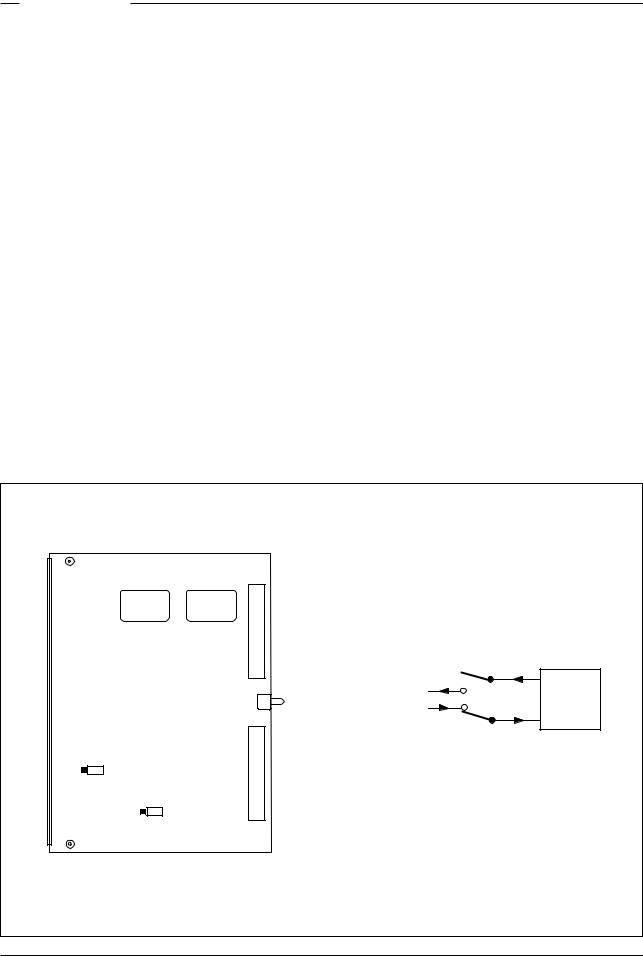
Private Data
Private data channels can be used for the transmission ofserialdataviathetriaxcable.Forexample,electronic scriptboard or character data for a video display unit can be transmitted to the camera.
The tracker microphone intercom channel is used for the data channel from camera head to base station. The program intercom channel is used for the data channel from base station to camera head. The input and output signals are available on the auxiliary connectors of the camera and base station (for camera see the connectors and cables section). If a channel is used for private data, then of course the original functions are no longer available.
To select the function of the base station to camera channeluseS801ontheAudio/intercomboard.Position AB selects the Progr function (factory setting); position AC selects the private data function.
To select the function of the camera to base station channeluseS802ontheAudio/intercomboard.Position AB selects the tracker microphone function (factory setting); position AC selects the private data function.
Rememberthatthepropagation-delaytimesaredifferent for different triax cable lengths, especially if a return signal is involved. At maximum lengths of 2400 metres the total delay is at least 25 µsec. and can be more than 30 µsec, depending on the type of triax cable.
Data signal specifications:
Baudrate: |
2400 |
Input level: |
TLL, possible RS232 |
Input impedance: |
100Kohm |
Output impedance: ~300 ohm |
|
Max load: |
~1Kohm |
C A B
S801
C A B
S802
1X A9
1X B9
A1
Program  S801
S801
Private data
Basestation
Tracker S802
Private data 
TOP SIDE |
Audio Intercom LF |
2-8 |
Technical Manual LDK 20(S) - Studio Camera |
Installation |
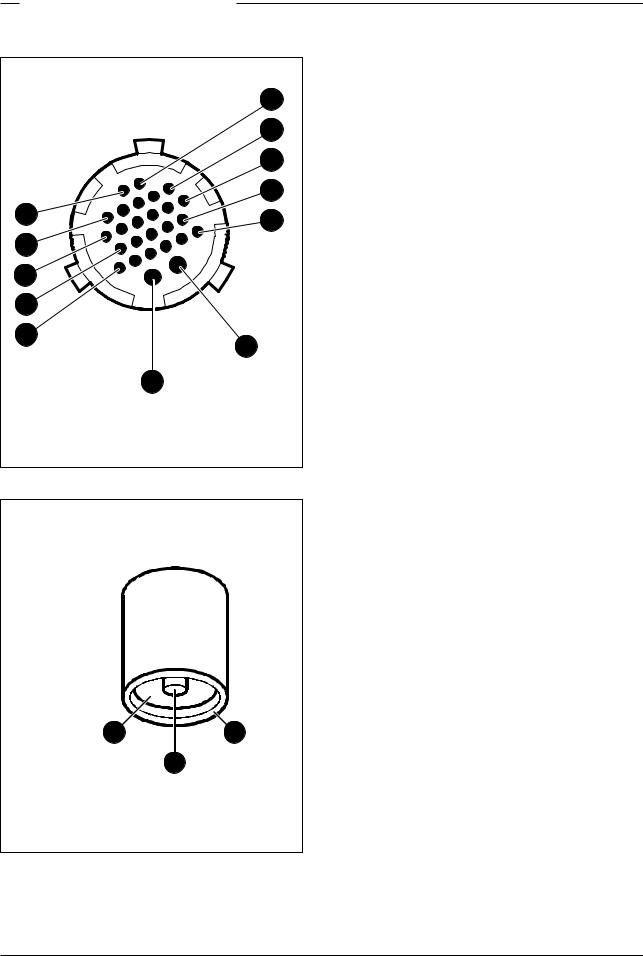
Connectors and Cables
VTR connector
|
24 |
|
22 |
|
17 |
|
11 |
23 |
6 |
|
|
18 |
|
12 |
|
7 |
|
1 |
B |
|
|
A |
|
26-pin male; panel view |
|
part number 3922 040 02551 |
|
Triax connector
2 |
3 |
1
3-pin; panel view
A.+ Battery from VTR (10.7 to 17V)
B.Ground
1. CVBS |
(only available with encoder option present) |
2.CVBS Return (only available with encoder option present)
3.Y + S Return
4.Y + S (luminance + sync.)
5.Pr: NTSC 700mV 75% saturated colour bar Cr: PAL 525mV (EBU N10)
6.Pr/Cr Return
7.Pb: NTSC 700mV 75% saturated colour bar Cb: PAL 525mV (EBU N10)
8.Pb/Cb Return
9.Not connected
10.Not connected
11.Not connected
12.VTR start/stop: +5V = recording; 0V = stop
13.Not connected
14.Not connected
15.Record/Tally
16.Not connected
17.Camera ground (shield)
18.Playback video input
19.Playback video return
20.Audio monitoring / VTR Save
21.Not connected
22.Not connected
23.Not connected
24.Not connected
Fischer |
|
|
1. |
Inner pin: |
Signals + power |
2. |
Inner shield: |
Return |
3. |
Outer shield: |
Camera housing |
part number 2432 020 00009 |
||
Trilock |
|
|
1. |
Inner pin: |
Signals + power |
2. |
Inner shield: |
Return |
3. |
Outer shield: |
Camera housing |
part number 3922 040 02682 |
||
ARD |
|
|
1. |
Inner pin: |
Signals + power |
2. |
Inner shield: |
Return |
3. |
Outer shield: |
Camera housing |
part number 3922 040 01492 |
||
LEMO |
|
|
1. |
Inner pin: |
Signals + power |
2. |
Inner shield: |
Return |
3. |
Outer shield: |
Camera housing |
part number 3922 040 02541
Installation |
Technical Manual LDK 20(S) - Studio Camera |
2-9 |
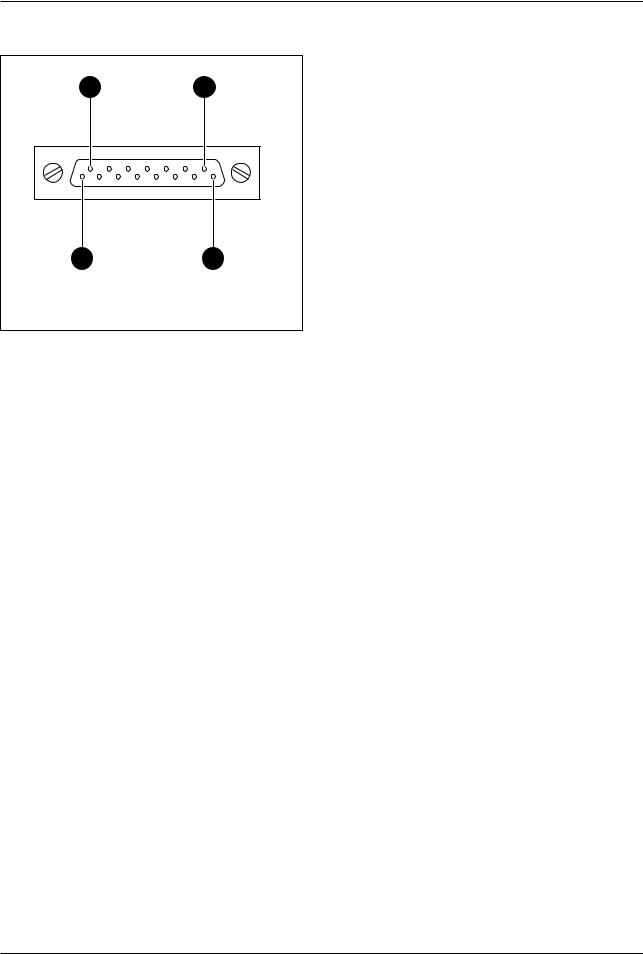
Viewfinder connector
9 |
15 |
1 |
8 |
15-pin female; panel view part number 3922 406
1.Video VF (Y + Sync)
2.(R-Y) Video
3.(B-Y) Video
4.Power return
5.Housing
6.+12 Vdc
7.SCL
8.INTN
9.Video VF return
10.(R-Y)/(B-Y) return
11.+12 Vdc
12.Power return
13.Housing
14.On air lamp
15.SDA
2-10 |
Technical Manual LDK 20(S) - Studio Camera |
Installation |
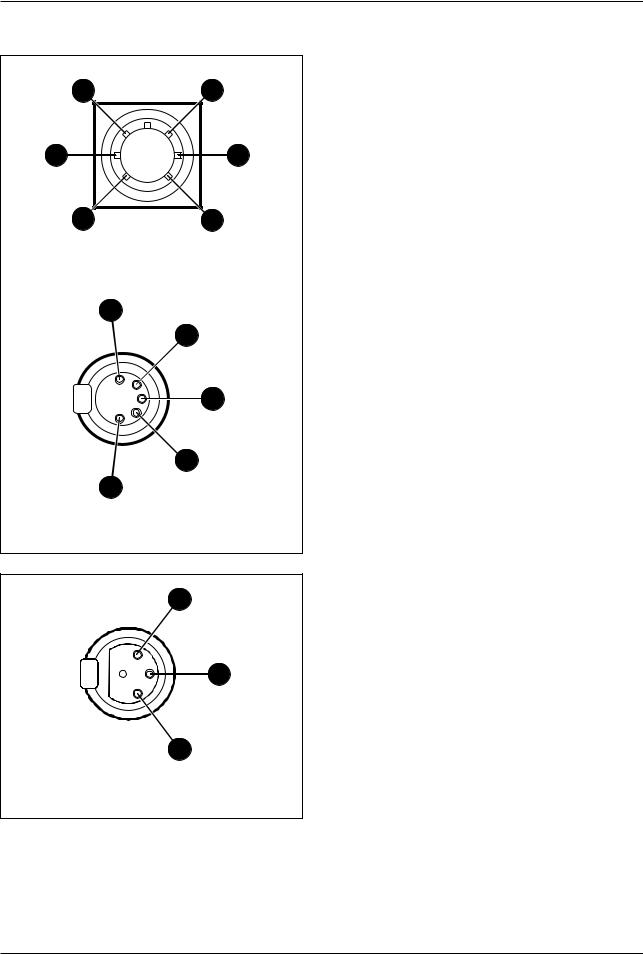
Camera headset connector
1 |
6 |
2 |
5 |
3 |
4 |
Tuchel 6-pin female; panel view part number 2422 026 02902
1
2
3
4
5
XLR 5-pin female; panel view part number 2432 026 00176
Audio microphone connectors
1
3
2
XLR 3-pin female; panel view part number 2422 026 02984
1.Telephone left
2.Not connected
3.Microphone
4.Microphone return
5.Telephone right
6.Telephone return
1.Microphone return
2.Microphone
3.Telephone return
4.Telephone left
5.Telephone right
•Microphone level -58dBm/-20dBm switchable
•Microphone impedance 200 ohm
•Telephone level +6dBm nominal
•Telephone output impedance <10 ohm
1.Audio Screen
2.Audio In
3.Audio Return
•Microphone impedance > 200 ohm
•Sensitivity remote controlled via base station: range: -70 to -28 dBm
maximum input = -6 dBm
•Signal at pin 2 of audio input is in phase with signal at pin 2 of audio output on Base Station
Installation |
Technical Manual LDK 20(S) - Studio Camera |
2-11 |
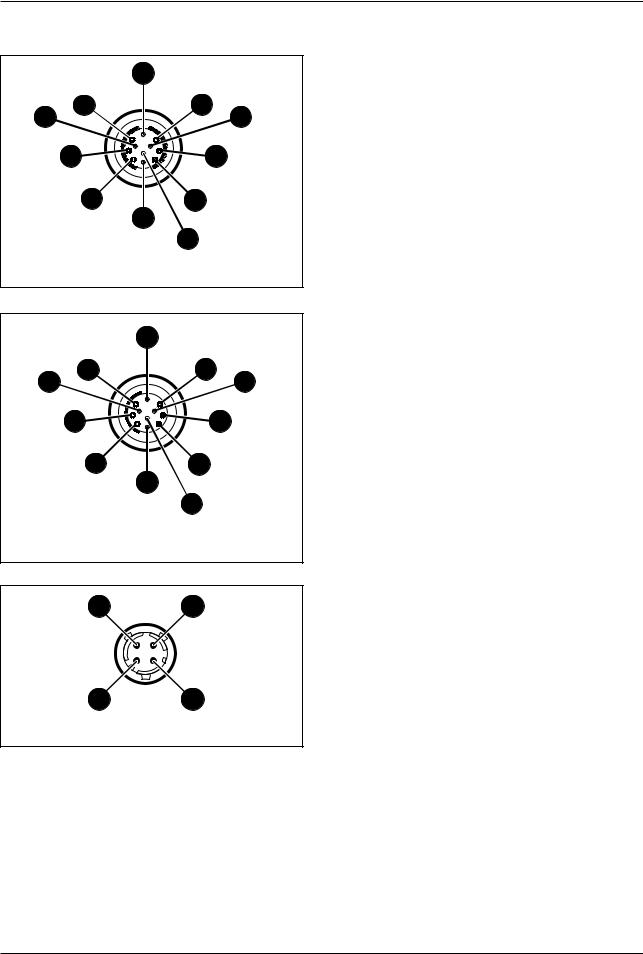
Auxiliary connector
|
10 |
11 |
9 |
3 |
2 |
4 |
8 |
5 |
7 |
|
6 |
|
1 |
Fischer 11-pin female; panel view part number 3922 040 02512
Tracker communication connector
|
10 |
11 |
9 |
3 |
2 |
4 |
8 |
5 |
7 |
|
6 |
|
1 |
Fischer 11-pin female; panel view part number 3922 040 02463
Data connector
AD
BC
Souriau 4-pin male; panel view part number 2411 020 11367
1.+5VL
2.0VL
3.AN0
4.AN1
5.Spare
6.Not connected
7.Private Data Camera - Base Station
8.Ground
9.Private Data Base Station - Camera
10.Ground
11.Shield
1.On-air signal return
2.Tracker microphone return
3.Tracker microphone input
4.Production tracker
5.Sidetone tracker
6.Return
7.Program tracker
8.Cameraman microphone
9.Tally control tracker (Cmos level, R out = 1k)
10.+12V; I max. = 100mA
11.+12V return
•Microphone level -58dBu/-20dBu switchable
•Microphone impedance 200 ohm
•Telephone level + 6dBu
•Telephone output impedance <10 ohm
A.Data
B.Data not
C.Not Connected
D.Shield
2-12 |
Technical Manual LDK 20(S) - Studio Camera |
Installation |
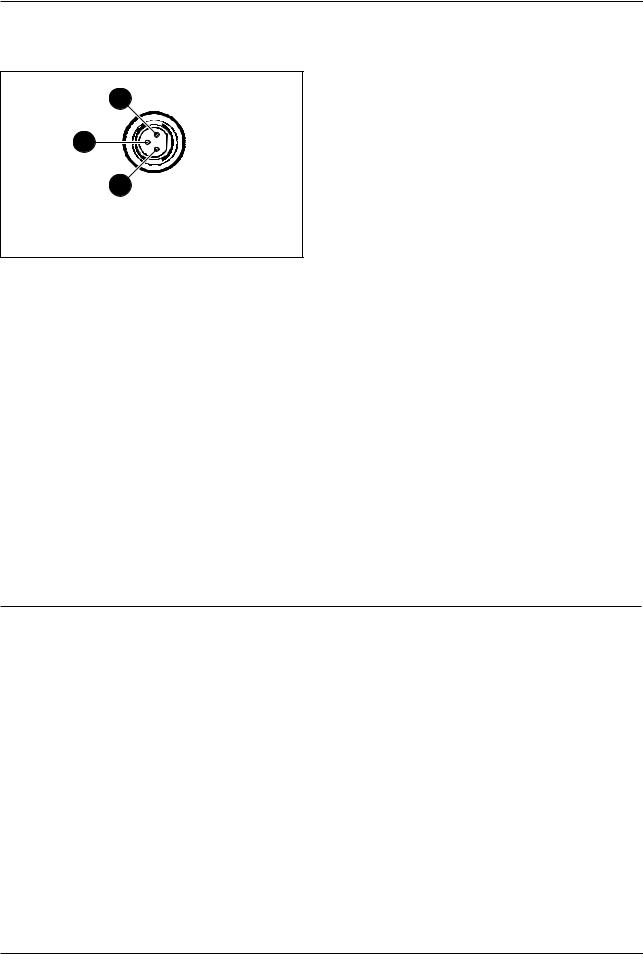
Script light connector
1 |
2
3 |
Fischer 3-pin female; panel view part number 3922 040 02881
1.+12V (Maximum Dissipation 3W)
2.Power Return
3.Shield
Cable connector part numbers
Panel Connector |
Type |
Part number |
Cable part number |
VTR
Triax
Triax
Triax
Triax Viewfinder Headset Headset Audio Mic Auxiliary Tracker Data Script Light
Ext video/Tp
* /02 is 2 m /05 is 5 m /10 is 10 m
26-pin |
male |
3922 040 02551 |
VTR cable LDL 2110/ * |
3-pin |
Fischer female |
2432 020 00009 |
LDK 8200/ ** |
3-pin |
Trilock |
3922 040 02682 |
-- |
3-pin |
ARD |
3922 040 01492 |
-- |
3-pin |
Lemo |
3922 040 02541 |
-- |
15-pin |
Female |
3922 406 |
-- |
6-pin |
Tuchel female |
2422 026 02902 |
-- |
5-pin |
XLR female |
2432 026 00176 |
-- |
3-pin |
XLR female |
2422 026 02984 |
-- |
11-pin |
Fischer female (two slot) |
3922 040 02512 |
2432 026 00254 male |
11-pin |
Fischer female (one slot) |
3922 040 02463 |
2432 026 00252 male |
4-pin |
Souriau male |
2411 020 11367 |
2411 020 12025 female |
3-pin |
Fischer female |
3922 040 02881 |
2432 026 00253 male |
2-pin |
Coax female |
2422 031 10529 |
-- |
** /00 for 8 mm cable /10 for 11 mm cable /20 for 14 mm cable
Installation |
Technical Manual LDK 20(S) - Studio Camera |
2-13 |

Specifications LDK20
Camera system |
Stand alone power required |
115/230V ac +/- 15% |
|||
Transmission |
system |
Utility power |
Nominal 70VA |
||
NTSC/PAL |
|
Max. 200VA (cable/system |
|||
Pick-up device |
|
dep.) |
|
||
3 x 2/3-inch Thomson DPM Frame Transfer CCDs |
Power consumption |
50 W |
|
||
Smear performance |
(Head + VF) |
|
|
||
No vertical smear |
Power consumption |
220W incl. Camera Head, VF, |
|||
Aspect ratio |
|
(Average system) |
70VA Utility; 700m (2.297ft) |
||
4:3/ 16:9 switchable |
|
Triax cable and lens |
|||
Picture elements |
|
|
|
||
4:3 and 16:9 aspect ratio |
Audio performance |
|
|
||
NTSC: 1000(h) x 498(v) |
Audio channels |
2 channels |
|
||
PAL: 1000(h) x 594(v) |
Microphone power |
Selectable 0/+12V/+48V |
|||
Optical |
system |
Input levels at Camera Head |
-64 dB/ -24 dB/0 dB |
||
F1.4 with quartz filter |
Output levels at Base Station |
0/+6 dB |
|
||
Filter cassette with Optical filters |
|
|
|
||
Exchangeable filter cassette with remote selectable 6 |
Intercom performance |
|
|
||
positions: Clear; ND 0.6; ND 1.2; ND 1.8; 4-point star; |
Intercom Headsets on Head |
Cam.Man |
|
||
6-point star |
Intercom Channels |
ENG/PROD/PROG |
|||
|
|
|
Input levels at Camera Head |
-64 dB/-24 dB |
|
Video performance |
Output levels at Base Station |
0/+6 dB |
|
||
Video processing |
|
|
|
||
Hires Digital Processing with 12 bit A/D and 14 bit DSP |
Connectors Camera Head |
|
|
||
technology |
Triax |
Option: Fischer/ARD/Lemo/ |
|||
Digital features |
|
Trilock |
|
||
Flare; White shading; Contrast; Highlight Handling; 6 point |
Power |
AC-power |
connector |
||
var. Matrix; Matrix-pos.; Gamma; Gamma Curve; Contour |
Lens |
36p |
|
||
include Skin detail and Extended Contour Gamma; |
Viewfinder |
15p D |
|
||
Leaking |
Pixel Corr.; VF video |
Mic In (Audio) |
2 x XLR3 |
|
|
Sensitivity |
|
Cameraman headset |
Option: XLR5/Tuchel |
||
2000 lux (186 ft cd) at F8.0 |
Video out |
Option: 1 Vpp; 75 Ohm; BNC |
|||
Condition: 3200K, reflectance 89.9%, 0 dB gain |
Genlock in |
1 Vpp; 75 Ohm; BNC |
|||
Minimum illumination |
VF-out |
1 Vpp; 75 Ohm; BNC |
|||
Approx. 2 lux at F 1.4 and +30 dB gain |
TP-video out |
1 Vpp; 75 Ohm; BNC |
|||
S/N ratio at normal gain |
External Camera Control |
4p DATA |
|
||
Typical: 61 dB PAL and 63 dB NTSC |
VTR |
26p SMPTE |
|||
Remark: +6dB S/N improvement with High Resolution |
Scriptlight power |
3p; 12V |
|
||
Digital Noise Slicer |
AUX |
11p; private data |
|||
Modulation depth |
Tracker |
11p; Communication/Signalling |
|||
>70% at 5Mhz in RGB Centre |
|
|
|
||
equivalent 800 TV lines |
Connectors Base Station |
|
|
||
Remark: >65% at 5Mhz in RGB Centre with High |
Triax |
Option: Fischer/ARD/Lemo/ |
|||
Resolution Digital Noise Slicer |
|
Trilock |
|
||
Registration |
|
Power |
AC-power |
connector |
|
<25 ns (0.05%) in all three zones, normal operation and |
Audio out |
2x XLR3 |
|
||
not |
including lens errors |
Intercom |
ENG/PROD/PROG |
||
Exposure control |
|
via 15p D-connector |
|||
Down to 1/1000s |
Signalling |
Call/Tally R/Y via 15p D-conn. |
|||
Lighting control |
CVBS (3x) |
1 Vpp; 75 Ohm; BNC |
|||
NTSC: nominal, 60 Hz +/-4 Hz |
RGB |
700 mVpp; 75 Ohm; BNC |
|||
PAL: nominal, 50 Hz +/- 3 Hz |
Y, R-Y, B-Y |
700, 525, 525 mVpp; 75 Ohm; |
|||
Clean scanning |
|
BNC |
|
||
NTSC: between 61.1 and 151.0 Hz |
PXM |
1 Vpp; 75 Ohm; BNC |
|||
PAL: between 51.0 and 103.0 Hz |
WFM |
1 Vpp; 75 Ohm; BNC |
|||
|
|
|
Serial Digital (2x) 270 MB/s |
Option: 800 mV; 75 Ohm; BNC |
|
General data |
|
Ext 1, 2 |
1 Vpp; 75 Ohm; BNC |
||
Concept |
|
Genlock in |
1 Vpp; 75 Ohm; BNC |
||
Studio configuration with PIP on 7-inch VF |
TP-video input |
1 Vpp; 75 Ohm; BNC |
|||
Triax cable length |
Ext. Camera Control |
4p DATA |
|
||
2,400m (7,875 ft) max. with 16mm (0.63") cable |
|
|
|
||
Options for Long Triax available |
Viewfinder |
|
|
||
Head weight (approx.) |
Type |
7-inch B/W |
|
||
26 kg (57.4 lb) excl. 7-inch VF |
Features |
Picture in Picture; Crosshairs; |
|||
Head dimensions (lxhxw) in mm (inches) - approx. |
|
Cursorbox |
|
||
367 x 305 x 240 (14.4 x 12 x 9.4) |
Resolution |
> 700 TVL |
|
||
Ergonomics |
|
Weight |
7 kg (15.4 lb) |
||
Moving VF position for easy camera fixing |
Power |
30 W |
|
||
Operating ambient temperatures |
|
|
|
||
-20 to +45°C (-4 to +113°F) for Camera Head |
These typical specifications are valid for PAL and NTSC |
||||
0 to +45°C (32 to +113°F) for all other items |
systems and are subject to change without notice |
||||
2-14 |
Technical Manual LDK 20(S) - Studio Camera |
Installation |

Section 3
Replacements
This section gives information on the procedures to follow when replacing printed circuit boards and mechanical components at first line level.
Contents
Introduction ........................................................ |
3-2 |
Printed circuit boards ......................................... |
3-2 |
Front module ...................................................... |
3-3 |
Filterwheel Cassette ........................................... |
3-4 |
Power supply ..................................................... |
3-4 |
Replacements |
Technical Manual LDK 20(S) - Studio Camera |
3-1 |
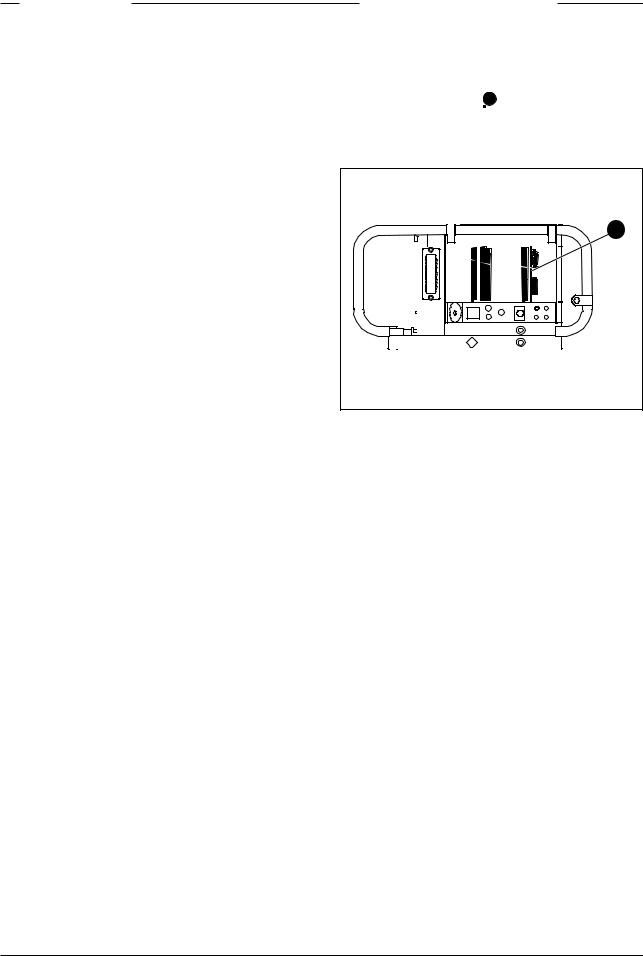
Introduction |
Printed circuit boards |
The instructions given in this section are restricted to those modules which can be replaced at the first line level. After a printed circuit board has been replaced it is sometimes necessary to carry out adjustments to match the new boards to your camera and so maintain the performance levels. The relevant adjustment procedures are referenced in section 4.
The procedures for removing the modules should be followed in reverse order when remounting the units.
To remove a printed circuit board proceed as follows:
a.Open the side cover (see section 2).
b.Swing the black cover 1 of the printed circuit board open.
c.Pull horizontally on this cover to free the board from its connector and slide it clear of the camera.
1 |
3-2 |
Technical Manual LDK 20(S) - Studio Camera |
Replacements |
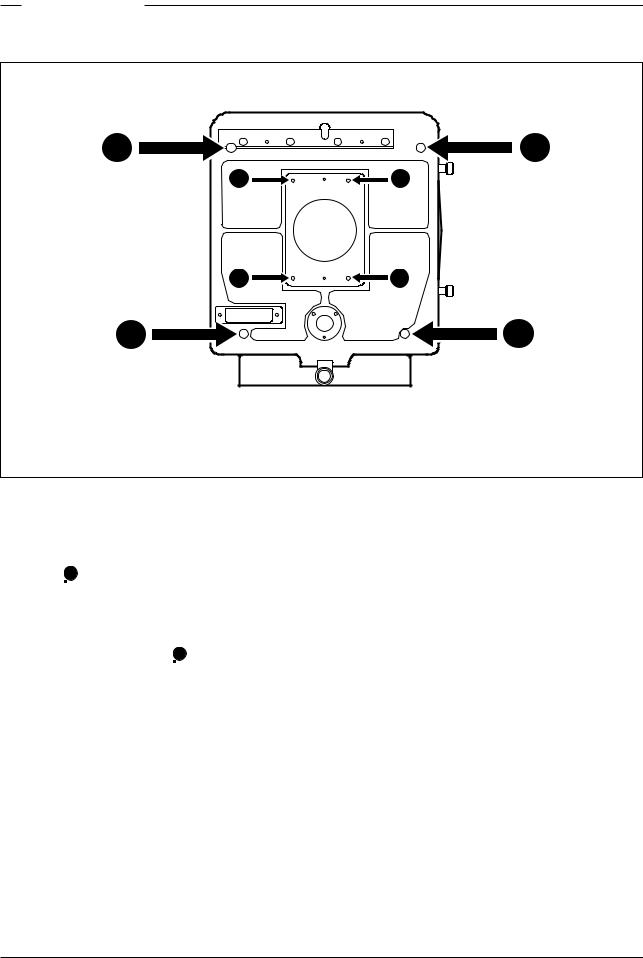
Front module
1 |
1 |
2 |
2 |
2 |
2 |
1 |
1 |
To remove the front module proceed as follows:
a.On the frontside of the camera remove the four screws 1 securing the front assembly.
b.Remove the front assembly from the camera.
c.Remove the Front Interconnection Board by unscrewing two screws from the backside of the front module.
d.Loosen the four screws 2 securing the front module.
e.Slide the front module straight out of the front assembly.
Replacements |
Technical Manual LDK 20(S) - Studio Camera |
3-3 |
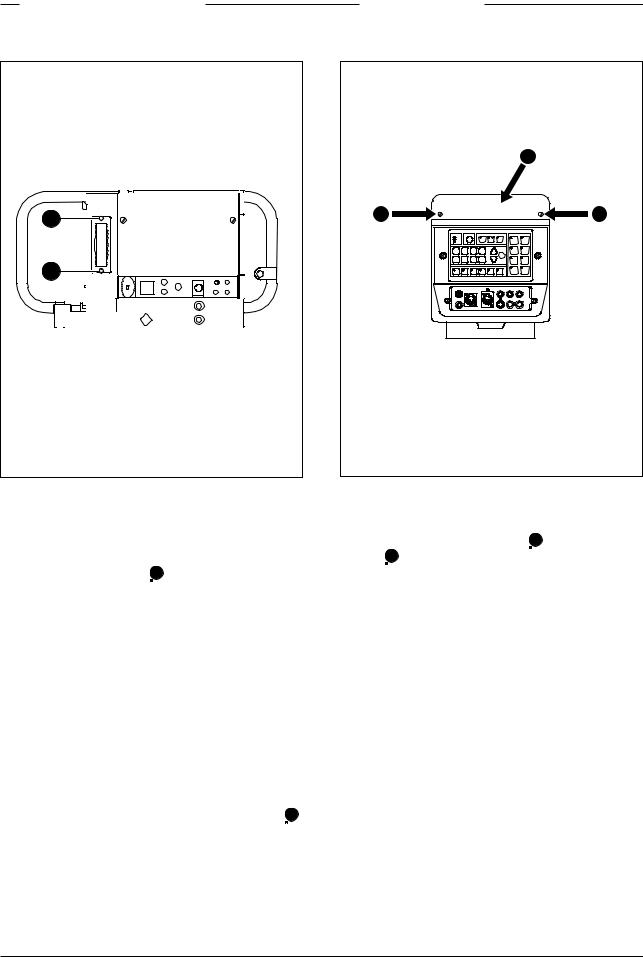
Filterwheel Cassette
1 |
1 |
Power supply
1
2 |
2 |
On Air |
Power |
|
|
Auto |
|
|
|
Remote |
light |
Sys/Iso |
VTR |
white |
R |
Ext.1 |
|
|
|
|
|
|
|||
Camera |
View |
Intercom |
Audio |
|
|
G |
Ext.2 |
install |
finder |
|
|
||||
|
|
|
|
|
Select |
|
|
Function |
Function |
Function |
Function |
|
|
|
|
A |
B |
C |
D |
|
|
B |
Y/Ext. |
Filter |
Filter |
Filter |
Filter |
Filter |
Filter |
-G |
Call |
1 |
2 |
3 |
4 |
5 |
6 |
||
Script light |
Progr |
Prod |
Eng |
On
Off
PTT
12V 0.25A
To remove the filterwheel cassette proceed as follows:
a.Loosen the two screws 1 securing the cover to the body of the front assembly.
b.Loosen the two screws securing the cassette to the body of the front module.
c.Use the grip to pull the cassette horizontally out of the camera.
Toreplacethefiltherwheelcassetteproceedasfollows:
a.Push the cassette horizontally into the camera.
b.Tighten the two screws to secure the cassette to the body of the front module.
c.Replace the cover and tighten the two screws 1 .
Before removing the power unit 1 unscrew the two screws 2 on the top of the camera which secure the power unit to the camera.
3-4 |
Technical Manual LDK 20(S) - Studio Camera |
Replacements |

Section 4
Adjustments
This section contains the adjustment procedures to be followed to obtain the best performance from the camera. These procedures need only be used if, following a module replacement, the camera does not perform according to specifications.
Contents
Introduction .......................................................... |
4-2 |
Digital Video Processor ..................................... |
4-15 |
Test Equipment ................................................... |
4-3 |
Video Miscellaneous Board ............................... |
4-17 |
Set-up Instructions ............................................... |
4-3 |
Sync./Shading Board ......................................... |
4-27 |
Video Processor 1 Board ..................................... |
4-5 |
Video Miscellaneous Board ............................... |
4-35 |
Digital Video Processor ..................................... |
4-10 |
Encoder Board PAL ........................................... |
4-37 |
Digital Video Processor ..................................... |
4-11 |
Encoder Board NTSC ........................................ |
4-43 |
Digital Video Processor Subboard .................... |
4-12 |
Audio/Intercom LF Board ................................... |
4-51 |
Digital Video Processor Subboard .................... |
4-13 |
Audio/Intercom LF Board RTS MODE .............. |
4-55 |
Digital Video Processor ..................................... |
4-14 |
Pre-Processor Board ......................................... |
4-57 |
Adjustments |
Technical Manual LDK 20(S) - Studio Camera |
4-1 |
